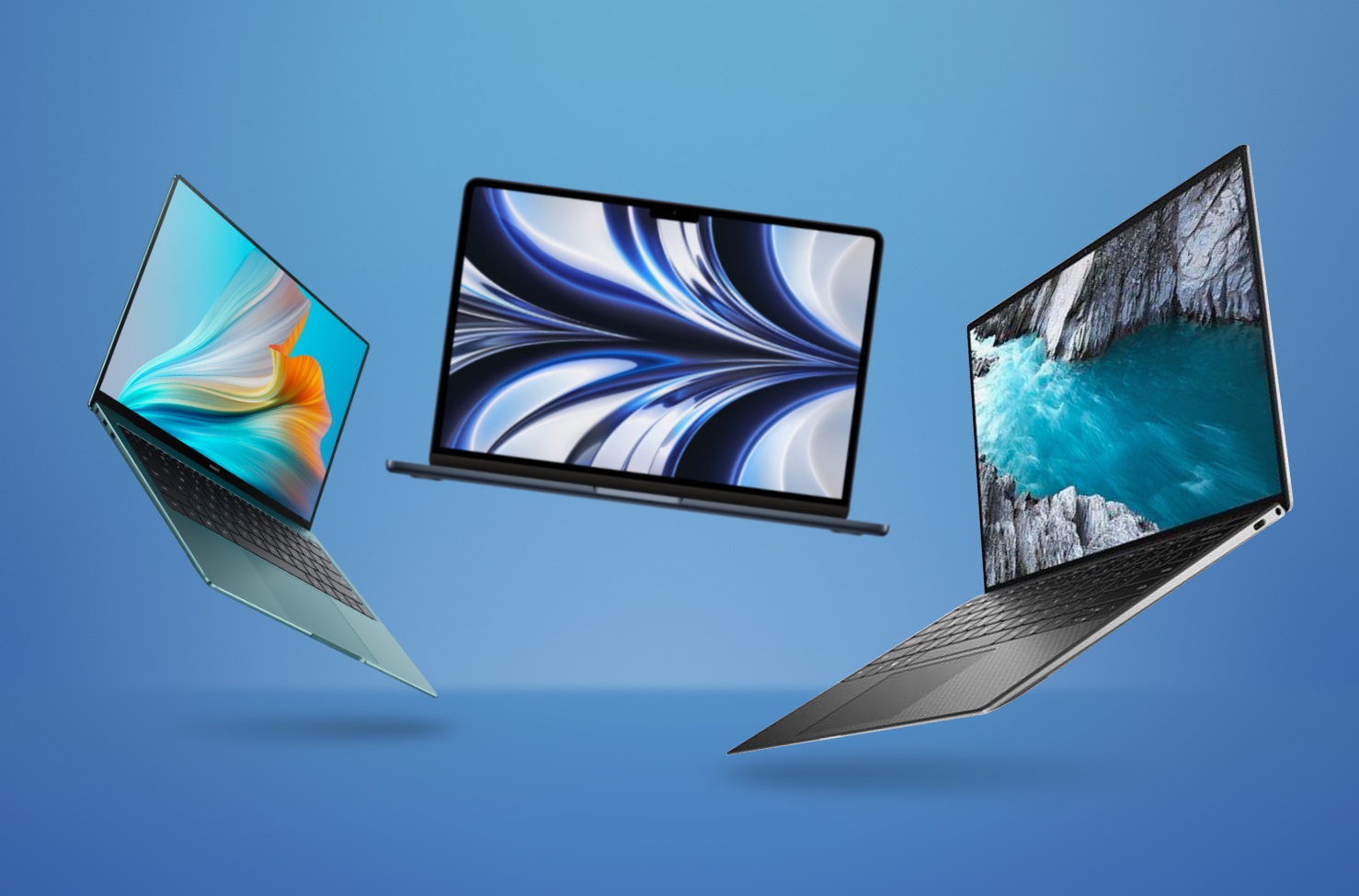
Laptops have become an indispensable part of modern life, revolutionizing the way we work, learn, and connect with the world. These portable computing devices have evolved significantly since their inception, offering enhanced performance, sleek designs, and versatile functionality. In this article, we'll delve into 20 fascinating facts about laptops, shedding light on their intriguing history, technological advancements, and impact on society. From the world's first laptop to the latest innovations in portable computing, we'll explore the remarkable journey of these devices that have transcended the boundaries of traditional desktop computing. So, grab your favorite laptop, get comfortable, and prepare to embark on an enlightening journey through the captivating realm of laptops.
Key Takeaways:
- Laptops, also known as notebook computers, are portable devices designed for on-the-go use, offering flexibility, performance, and diverse features to cater to various user needs and preferences.
- From the first laptop in 1981 to the advanced ultrabooks of today, laptops have evolved to become essential tools for work, learning, entertainment, and creativity, empowering users with the freedom to unleash their potential anytime, anywhere.
Laptops are also known as notebook computers.
Laptops are portable computers that are also referred to as notebook computers due to their compact size and resemblance to a spiral-bound notebook. These devices are designed for on-the-go use, allowing users to carry their computing power with them wherever they go.
The first laptop was introduced in 1981.
The Osborne 1, released in 1981, is considered the first true laptop computer. It featured a 5-inch display, a detachable keyboard, and a weight of 24.5 pounds, making it significantly more portable than previous computers.
Laptops come in various sizes and weights.
Laptops are available in a range of sizes and weights, catering to different needs and preferences. From lightweight ultrabooks designed for portability to larger, more powerful gaming laptops, there is a diverse selection to choose from.
The keyboard layout on laptops differs from that of desktop computers.
Laptop keyboards are designed with space-saving layouts to accommodate the compact form factor. This often results in smaller keys and the integration of functions typically found on separate keys in desktop keyboards.
Laptops offer flexibility in terms of power source.
Unlike desktop computers, laptops are equipped with built-in rechargeable batteries, allowing users to operate them without being tethered to a power outlet. This feature enhances their portability and convenience.
Laptops have built-in touchpads for cursor navigation.
Most laptops are equipped with a touchpad, also known as a trackpad, which serves as a built-in alternative to a mouse for navigating the on-screen cursor.
Laptops have various connectivity options.
Laptops are equipped with a range of connectivity options, including USB ports, HDMI ports, audio jacks, and wireless capabilities such as Wi-Fi and Bluetooth, enabling users to connect to external devices and networks.
Laptops are powered by rechargeable batteries.
Laptops are designed to be powered by rechargeable batteries, which provide the necessary energy for portable use. These batteries can be recharged using the laptop's power adapter.
Laptops offer portability without sacrificing performance.
Modern laptops are engineered to deliver impressive performance while maintaining portability, making them suitable for a wide range of tasks, from productivity and entertainment to creative work and gaming.
Laptops have evolved to incorporate advanced security features.
To protect user data and privacy, laptops now feature advanced security measures such as fingerprint scanners, facial recognition technology, and encrypted storage options.
Laptops are equipped with integrated webcams and microphones.
Most laptops are equipped with built-in webcams and microphones, enabling users to engage in video calls, virtual meetings, and content creation without the need for external peripherals.
Laptops support a diverse range of software applications.
From productivity suites and design software to entertainment and gaming applications, laptops are capable of running a diverse array of software to cater to various user needs and preferences.
Laptops have different operating systems to choose from.
Laptops are compatible with various operating systems, including Windows, macOS, and Linux, offering users the flexibility to select an OS that aligns with their preferences and requirements.
Laptops have evolved to feature high-resolution displays.
Modern laptops are equipped with high-resolution displays, including Full HD (1920 x 1080) and 4K (3840 x 2160) options, delivering crisp visuals for multimedia consumption and content creation.
Laptops have become essential tools for remote work and learning.
The portability and versatility of laptops have made them indispensable for remote work, online learning, and telecommuting, providing users with the flexibility to stay productive from any location.
Laptops are available in a range of price points.
From budget-friendly options to premium ultraportable laptops, the market offers a wide range of price points to accommodate varying budget constraints and feature preferences.
Laptops can be customized and upgraded to a certain extent.
While not as customizable as desktop computers, some laptops allow users to upgrade components such as RAM and storage, providing a degree of flexibility for enhancing performance.
Laptops have become integral to digital entertainment.
Laptops serve as versatile entertainment hubs, enabling users to stream movies, play games, listen to music, and engage in a wide range of digital entertainment activities.
Laptops are designed for diverse user demographics.
With varying form factors, performance capabilities, and features, laptops are designed to cater to the diverse needs of users, including students, professionals, creatives, and casual users.
Laptops continue to evolve with technological advancements.
The landscape of laptop technology is continually evolving, with ongoing advancements in performance, design, connectivity, and user experience shaping the next generation of portable computing devices.
Laptops, also known as notebook computers, have become indispensable tools for modern-day computing. These portable devices offer the flexibility to work, learn, create, and entertain on the go, making them a ubiquitous presence in both professional and personal settings. From the early days of the Osborne 1 to the sleek and powerful ultrabooks of today, laptops have undergone significant transformations, incorporating advanced features and capabilities while maintaining their portability. With diverse sizes, weights, and performance profiles, laptops cater to a wide range of user preferences and requirements, serving as versatile companions for a myriad of tasks. As technology continues to advance, laptops are poised to remain at the forefront of portable computing, driving innovation and empowering users with the freedom to unleash their potential anytime, anywhere.
Conclusion
In conclusion, laptops have revolutionized the way we work, learn, and connect with the world. These portable devices offer unparalleled convenience, enabling users to accomplish tasks on the go. From powerful processors to sleek designs, laptops continue to evolve, catering to diverse needs and preferences. As technology advances, we can expect even more innovative features and enhanced performance from these indispensable gadgets. Whether for professional endeavors or leisure activities, laptops remain essential tools in the digital age, empowering individuals to unleash their potential and stay connected in an ever-changing world.
FAQs
What are the key components of a laptop?Laptops typically consist of a display screen, keyboard, touchpad or pointing device, processor, memory, storage drive, and battery. These components work together to provide a seamless computing experience.
How do I choose the right laptop for my needs?When selecting a laptop, consider factors such as processing power, memory, storage capacity, display size and resolution, battery life, and portability. Assessing your specific requirements, whether for work, entertainment, or creative pursuits, will help you narrow down the options and find the perfect fit for your lifestyle.
Laptops have become indispensable companions in our daily lives, offering convenience and functionality on the go. Whether you're searching for the perfect USB-C charger to keep your MacBook powered up, a stylish and practical laptop tote bag to carry your device in style, or considering upgrading to a high-performance i7 Windows laptop, there's a wealth of information waiting to be explored. Dive into our curated collection of articles that cover essential laptop accessories and powerful computing options, empowering you to make informed decisions and enhance your digital experience.
Was this page helpful?
Our commitment to delivering trustworthy and engaging content is at the heart of what we do. Each fact on our site is contributed by real users like you, bringing a wealth of diverse insights and information. To ensure the highest standards of accuracy and reliability, our dedicated editors meticulously review each submission. This process guarantees that the facts we share are not only fascinating but also credible. Trust in our commitment to quality and authenticity as you explore and learn with us.


